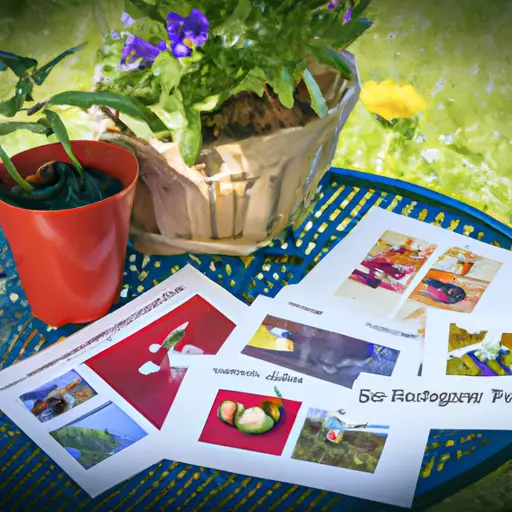Container planting is an excellent way to bring beauty and life to any space, whether you have a sprawling garden or a small balcony. It allows individuals to exercise their green thumb without the need for a large outdoor area. But just like traditional gardening, container planting requires knowledge and effort to ensure successful growth and blossoming. Here are some useful tips to help you create stunning container gardens that go from seeds to blooms.
Choose the Right Container: The first step in successful container planting is selecting the right container for your plants. Consider the size and growth habits of the plants you want to grow. Larger plants require more space, while smaller ones can thrive in smaller containers. Ensure that your pots have drainage holes at the bottom so that excess water can escape, preventing root rot.
Select Quality Soil: The soil you use plays a crucial role in plant growth. Use high-quality potting mix specifically designed for containers, rather than regular garden soil. Potting mix is lightweight, well-draining, and enriched with necessary nutrients. This ensures proper airflow and prevents waterlogging, creating an ideal environment for healthy roots and vigorous plant growth.
Provide Adequate Sunlight: Most plants need sunlight to grow and bloom successfully. Observe your outdoor space or balcony throughout the day to determine how much sun it receives. Different plants have different sunlight requirements – some thrive in full sun conditions while others prefer partial shade or indirect sunlight. Choose the right plants according to your available light conditions.
Understand Watering Needs: Proper watering is crucial for container gardening success. The key is finding the right balance – watering enough without overwatering or underwatering your plants. Containers tend to dry out more quickly than garden beds due to increased exposure to wind and sun, so monitor moisture levels regularly. Stick your finger about an inch into the soil; if it feels dry at that depth, it’s time to water.
Fertilize Regularly: Container-grown plants depend on you for their nutrient supply, as the confined space limits their access to natural resources. Provide your plants with a slow-release fertilizer or liquid feed formulated for container plants. Follow the recommended dosage guidelines, as over-fertilizing can harm your plants. Regular feeding ensures healthy growth and vibrant blossoms throughout the growing season.
Consider Companion Planting: Mixing different plant varieties in a single container allows you to create visually appealing arrangements while benefiting from the symbiotic relationships between certain plants. Some combinations offer pest control or complementary nutrient absorption, which can enhance overall plant health and growth. For example, planting marigolds alongside vegetables can repel pests while adding colorful blooms to your arrangement.
Monitor Pests and Diseases: Container gardens are not immune to pests and diseases; therefore, it’s essential to be vigilant. Inspect your plants regularly for any signs of insect damage or disease symptoms such as wilting, discoloration, or leaf spots. Consider using organic pest control methods like neem oil or insecticidal soap if needed.
Maintain Regular Pruning and Deadheading: To ensure continuous blooming and healthy growth, remove spent flowers promptly through deadheading. This practice redirects energy towards new bud formation rather than seed production. Additionally, regular pruning helps maintain size and shape, preventing overcrowding in containers.
Container planting offers a creative outlet for gardeners of all levels of expertise. It allows you to experiment with different plant combinations and arrangements while beautifying your surroundings. By following these tips – choosing the right container, using quality soil, providing adequate sunlight, watering correctly, fertilizing regularly, considering companion planting, monitoring pests and diseases, and conducting regular pruning – you’ll be on your way to successful container gardening from seeds to blooms!













